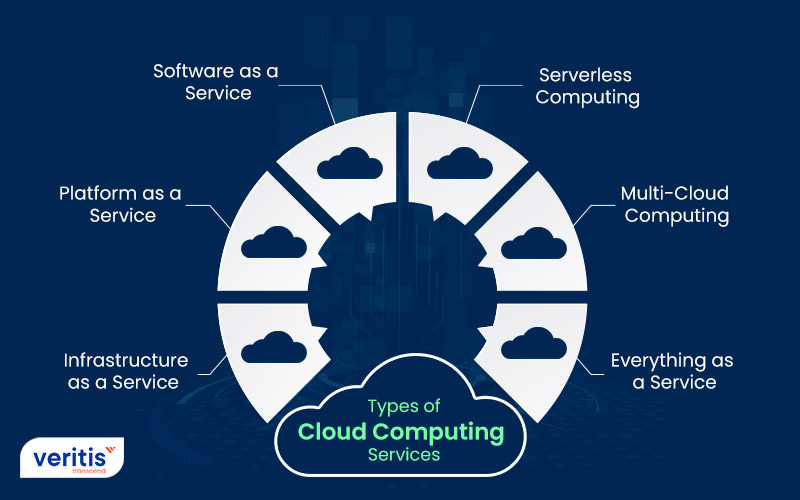Increase Your Online Existence with LinkDaddy Cloud Services: Reliable Strategies for Cloud Services Press Release
Increase Your Online Existence with LinkDaddy Cloud Services: Reliable Strategies for Cloud Services Press Release
Blog Article
Simplify Your Facilities With Cloud Services
As organizations navigate the ever-evolving landscape of innovation and information administration, the function of cloud solutions in simplifying facilities has actually become significantly prominent. Exactly how can companies properly browse this transition and really open the potential of cloud services for simplifying their facilities?
Advantages of Cloud Provider
Cloud solutions provide a streamlined approach to handling IT framework, giving services with scalability, cost-efficiency, and versatility. One of the key benefits of cloud solutions is the scalability they provide.
In addition, cloud solutions eliminate the need for companies to invest in pricey software and hardware. This cost-efficiency is a considerable advantage, specifically for little to medium-sized ventures aiming to lessen in advance costs. By utilizing cloud solutions, services can access high-grade IT sources without the large cost related to standard infrastructure setups.
Moreover, cloud services give businesses with the versatility to access their information and applications from anywhere with an internet connection. This degree of availability enhances cooperation amongst groups, makes it possible for remote job, and raises general efficiency. The adaptability provided by cloud solutions equips businesses to adapt promptly to transforming market conditions and customer demands.
Cost Financial Savings and Scalability
Along with the functional advantages highlighted earlier, the integration of cloud solutions right into a business's framework yields significant cost savings and improved scalability. Cloud solutions supply a pay-as-you-go model, allowing organizations to scale sources up or down based on current demands, thus staying clear of the costs related to preserving excess ability. This versatility enables companies to adapt rapidly to changing demands without incurring unneeded expenditures.
Furthermore, cloud services eliminate the requirement for ahead of time financial investments in software and hardware, minimizing resources expenses. Overhead are also reduced as business no longer need to take care of and keep physical servers, resulting in lower power intake and IT staffing prices. Furthermore, cloud services provide automatic updates and upkeep, making sure that the infrastructure remains updated and secure without requiring hands-on treatments.
Boosted Safety Steps
Carrying out rigid safety and security actions is critical when integrating cloud solutions into a firm's infrastructure to guard sensitive information and ensure conformity with industry regulations. Cloud service carriers offer improved security functions such as information security, firewall defense, and multi-factor verification to minimize cybersecurity risks. Encryption aids protect data both at rest and en route, making sure that only licensed individuals can access sensitive information. Firewall programs work as an obstacle between inner networks and external threats, tracking and managing incoming and outbound network traffic. Multi-factor authentication adds an extra layer of safety by needing individuals to supply several kinds of confirmation prior to accessing the cloud solutions.
Furthermore, regular safety audits and compliance analyses assist ensure and determine susceptabilities adherence to sector requirements. Firms can likewise benefit from attributes like automatic safety and security updates and real-time hazard tracking given by cloud company. By focusing on safety and security procedures and remaining proactive in attending to potential risks, companies can with confidence take advantage of go to my site cloud solutions while safeguarding their valuable data from unapproved gain access to or violations.
Transitioning to Cloud Infrastructure
To successfully integrate cloud solutions into a business's infrastructure, a structured strategy that deals with the shift in the direction of cloud-based solutions is essential. Transitioning to shadow framework involves mindful preparation and execution to make sure a smooth migration process. The initial step is to assess the present infrastructure and identify which applications and systems appropriate for migration to the cloud. This evaluation must take into consideration factors such as data level of sensitivity, conformity needs, and efficiency demands.
When the evaluation is full, a migration strategy should be created. This strategy ought to describe the timeline, resources, and responsibilities for relocating each element to the cloud. It is necessary to communicate this strategy plainly to all stakeholders to make sure placement and decrease disturbances during the shift.
Throughout the migration tracking, screening and procedure are essential to determine and address any kind of problems promptly. Regular checkpoints must be established to track progression and make necessary adjustments. Additionally, training for workers on utilizing cloud solutions should be given to make sure a successful shift and optimize the benefits of the brand-new infrastructure.
Ideal Practices for Cloud Fostering
Effective adoption of cloud services pivots on the tactical alignment of service objectives with technical capabilities and organizational preparedness. To guarantee a smooth change to the cloud, organizations need to begin by conducting an extensive assessment of their existing infrastructure and recognizing which workloads are best suited for cloud movement. It is vital to entail essential stakeholders from various divisions in the decision-making process to get buy-in and resolve any concerns beforehand.
Another finest technique for cloud fostering is to focus on protection and compliance. Organizations needs to thoroughly review the security actions provided by cloud provider and make certain that their information is safeguarded according to market requirements and governing needs. Carrying out robust data encryption, access controls, and regular security audits can help reduce risks linked with cloud fostering.

Verdict

As companies navigate the ever-evolving landscape of technology and data administration, the function of cloud solutions in simplifying facilities has actually ended up being increasingly noticeable - universal cloud Service. How can businesses effectively navigate this transition and absolutely unlock the capacity of cloud solutions for streamlining their framework?
Cloud services supply a streamlined method to managing IT framework, giving companies with scalability, cost-efficiency, and adaptability. By utilizing cloud solutions, services can access premium IT sources without the substantial rate tag linked with conventional infrastructure configurations.
To make certain a smooth shift to the cloud, organizations must begin by conducting a thorough analysis of their current facilities and recognizing which work are best suited for cloud migration.
Report this page